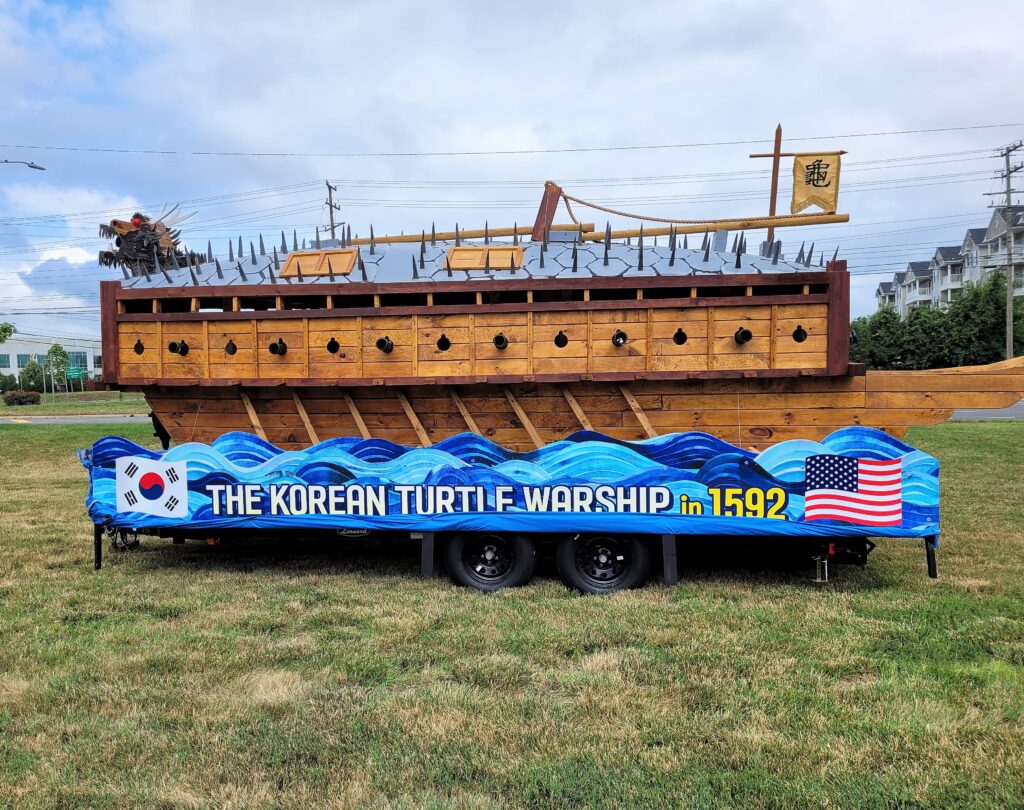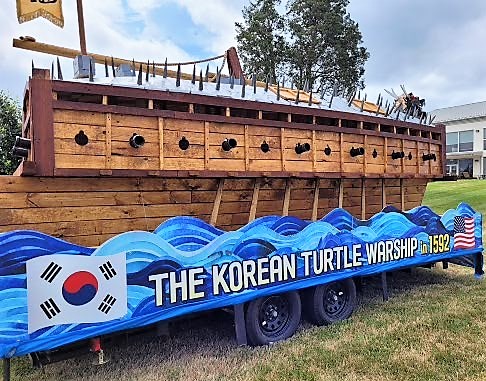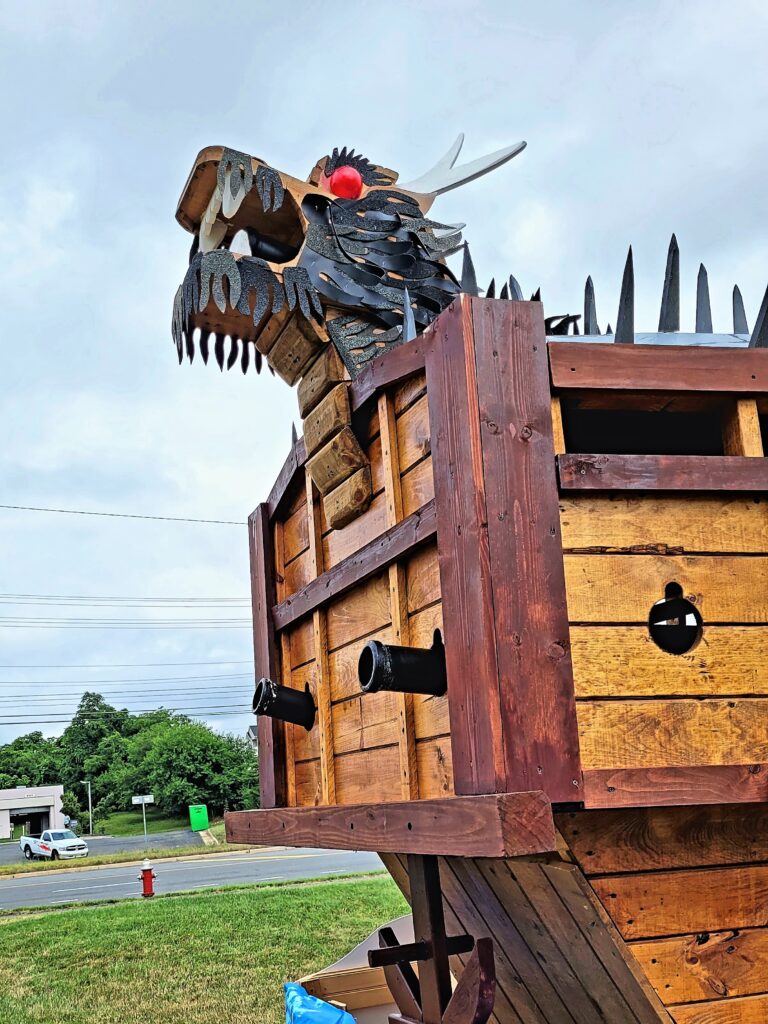Today I was driving by the Open Door Presbyterian Church’s parking lot, when I saw this large wooden model ship with the wording, “The Korean Turtle Warship in 1592”.
The unusual ship has a series of wooden spikes protruding from the top, a yellow flag and a prominent dragon head’s bow. There are several wooden oars and faux cannon gun ports on the sides of the ship.
The whole model sits on a trailer with wheels. The signage below the boat includes the flags of Korea and the US.
I know very little of Korean’s past history, so I went online for more information about this naval warship.

Brief History of the Turtle Warship
In 1592, the Japanese Ruler Hideyoski invaded Korea. The Japanese, at that time, were well equipped with naval boats and sailors.
Admiral Yi Sun-Shin, a brilliant Korean naval officer, using previous Korean knowledge on boat building techniques, produced a small fleet of remarkable ships. These ships were later called Turtle warships.
The Turtle boat, or Geobukseon in Korean, probably got its name from the somewhat turtle box shape of the boat and the protective upper shell.
This fortress-like design allowed the Koreans aboard to be almost invisible to the enemy and become a powerful naval fighting unit.
The Turtle boats quickly overtook the many Japanese ships. The war ended in a truce with Korea being divided.
Interestingly, Turtle boats had a common ironclad feature with a couple of Civil War boats namely the Merrimack and the Monitor built 250 years later.

What is a Turtle Boat?
Turtle boats are ironclad ships with low round metal roofs. The roof had a series of protruding iron spikes for protecting the ship from invaders. Wet mats or empty bags were tossed over the spikes. This effectively hid them from the enemy and prevented any surprise attacks.
The sides of the boat had portals for cannons and wooden oars. Above the cannons was an area for the the firing of small arms or arrows.
A dragon’s head would pour smoke from its mouth to confuse the enemy troops. The dragon head, a reinforced structure, was used for ramming other vessels. Or it was used as a portal for shooting flaming arrows or cannonballs at the enemy.
Turtle ships were made of dense wood like spruce or red pine to withstand the recoil from the firing cannons.
The masts could be raised or lower in battle.
Each side of the boat had 8 to 10 oars above the cannons for the rowers. The cannons were placed so that they could fire from any angle.

Ending Notes on the Turtle Warships
The Turtle warship tells the story of ingenuity and a can-do attitude of the Korean people.
The design and building of the Turtle boat was clever for protecting itself and reigning in times of naval battles.
It is also nice to see this unusual display and learn a little bit more about it.
A Special thank you to David Kim of ODPCEC for allowing me to use photographs of the Turtle Warship in today’s blog, and to those members of the congregation who built this amazing detailed model ship.
Resource Sites: www.navalhistory.org, dealiestblog.wordpress.org, www.antiquealive.com, wikipedia.com and www.uh.edu
